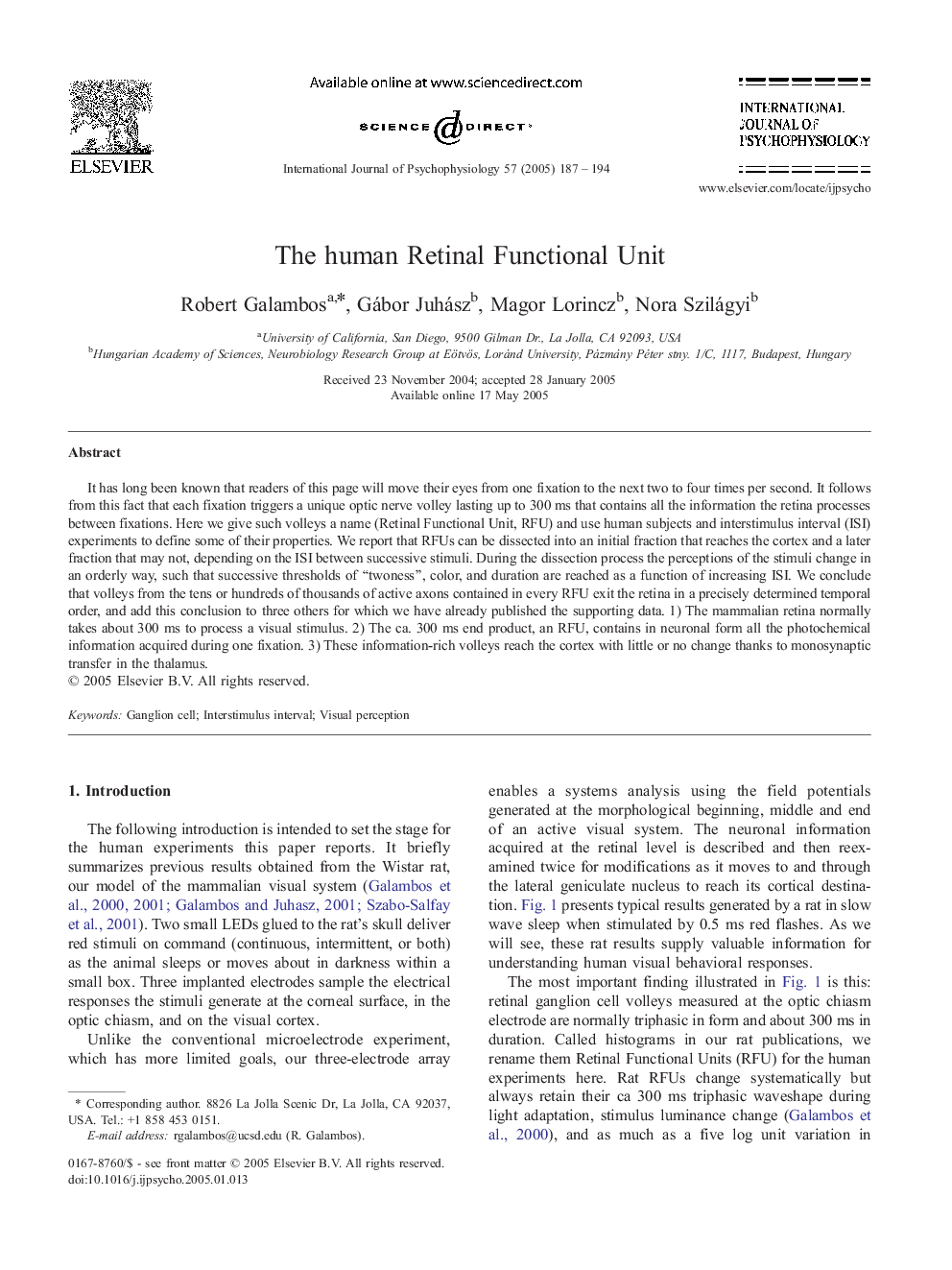| Article ID | Journal | Published Year | Pages | File Type |
|---|---|---|---|---|
| 9722612 | International Journal of Psychophysiology | 2005 | 8 Pages |
Abstract
It has long been known that readers of this page will move their eyes from one fixation to the next two to four times per second. It follows from this fact that each fixation triggers a unique optic nerve volley lasting up to 300 ms that contains all the information the retina processes between fixations. Here we give such volleys a name (Retinal Functional Unit, RFU) and use human subjects and interstimulus interval (ISI) experiments to define some of their properties. We report that RFUs can be dissected into an initial fraction that reaches the cortex and a later fraction that may not, depending on the ISI between successive stimuli. During the dissection process the perceptions of the stimuli change in an orderly way, such that successive thresholds of “twoness”, color, and duration are reached as a function of increasing ISI. We conclude that volleys from the tens or hundreds of thousands of active axons contained in every RFU exit the retina in a precisely determined temporal order, and add this conclusion to three others for which we have already published the supporting data. 1) The mammalian retina normally takes about 300 ms to process a visual stimulus. 2) The ca. 300 ms end product, an RFU, contains in neuronal form all the photochemical information acquired during one fixation. 3) These information-rich volleys reach the cortex with little or no change thanks to monosynaptic transfer in the thalamus.
Related Topics
Life Sciences
Neuroscience
Behavioral Neuroscience
Authors
Robert Galambos, Gábor Juhász, Magor Lorincz, Nora Szilágyi,
